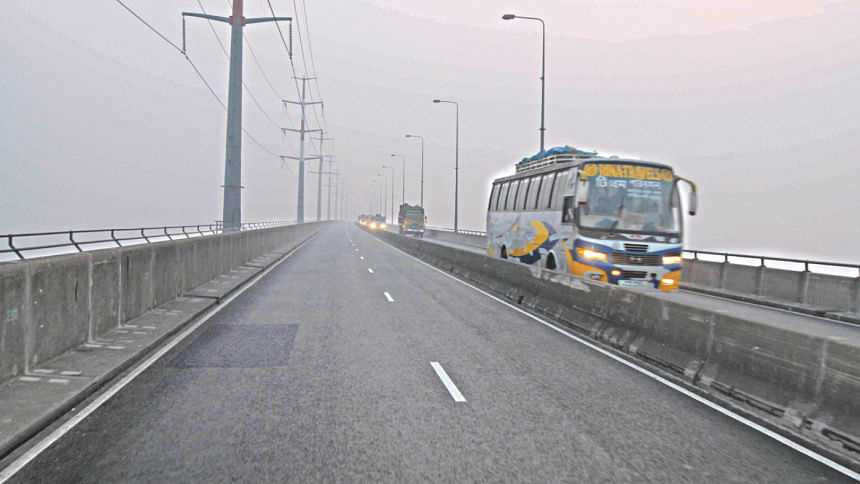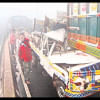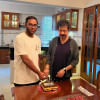Lights were out during pile-ups

All 153 sodium lights on Bangabandhu bridge were turned off during the 16-vehicle pile-ups on the bridge in the early morning fog of January 9 that left six people dead.
To the astonishment of many, Bangladesh Bridge Authority (BBA), which looks after the country's longest bridge, had usually been using only half of the lights on the bridge to “save electricity”, even in dense fog.
The BBA had not used the six flood lights on the bridge to improve visibility either, sources said.
When the first pile-up happened on that day at 6:30am, the lights were off.
The sun rose at 6:42am that day.
The lights were also off during the second pile-up in poor visibility a few hours later and yards away from the first crash, said victims, witnesses, and police.
Had the lights been on, perhaps the crashes would not have happened, they said.
People who had been involved in running the bridge claimed that when all the 400-watt lights were turned on, it improved visibility significantly even amid dense fog.
“There was dense fog but no sodium lights were on, which made driving more difficult,” a truck driver told our correspondent in Tangail on the bridge two hours after the first pile-up.
Two days after the crashes, BBA's Executive Engineer Abul Kalam Azad said, “The lights are automatically turned on when the sun goes down in the evening and turned off when the sun is up.”
If his claim is true, the lights should have been on during the first pile-up which happened at 6:30am and off during the second pile-up which was at 9:45am.
Azad, who along with a few other engineers look after the bridge, did not want to say when the lights were actually turned on or off that day.
The Daily Star talked to two people who until October last year were involved in operating and maintaining the bridge.
They said a time-triggered device turns the lights off at 5:30am during the summer and at 6:00am during winter. The BBA officials could override the system considering visibility on the bridge, they added.
Both the pile-ups happened in dense fog on January 9.
A police investigation also found that lights were off on the day of the pile-up. “There were no lights on during the first pile-up,” said Additional Superintendent of Police (North) of Tangail Mohammad Aslam Khan on Saturday.
The BBA officials had been claiming that the lights were on during the first pile-up. They are now saying that the crash actually took place at 5:30am and some of the lights, among half the lights they keep on, at the scene were out of order.
Earlier, they had told the media that the first crash happened at 6:30am when it was completely dark and visibility was poor.
Prof Jamilur Reza Choudhury, who was involved in the building of the Bangabandhu Bridge, was surprised to know that the BBA was using only half the lights and that too were switched off.
“In August last year, when I was crossing the bridge, I saw many of the lights were off. It was dark and I called engineer Azad who told me that they were saving energy,” Jamilur told this paper yesterday.
“I told the engineer that these few lights will not contribute much to energy savings. I also informed the BBA chief engineer of the matter. But I don't know why the lights were off amid dense fog. All the lights should have been on.”
He recommended an enquiry with experts and BBA engineers to know more about using half the lights and the reasons for the crashes.
However, the BBA feels no necessity to probe the pile-ups.
“There was no fault on the part of the BBA… The accidents happened as vehicles one after another hit from behind due to reckless driving amid fog,” Bridges Division Secretary Khandaker Anwarul Islam told The Daily Star yesterday.
Asked why the BBA uses only half of the lights when all the lights were there, he replied half of the lights were enough to light the bridge. He claimed that visibility did not improve in fog even if all the lights were on.
Several experts disagreed with the secretary and engineer Azad's views.
“This is true that drivers never follow the 80kmph speed limit and overtake on the bridge. But the BBA and its officials at the bridge site cannot avoid responsibility just by giving this excuse as they did nothing to check the crashes on that day,” an expert told The Daily Star, wishing anonymity.
Several sources at the bridge site said the crashes occurred due to sheer negligence of the BBA officials who should have monitored the situation and switched on all the lights instead of turning them off in poor visibility.
They could have suspended vehicular movement until visibility improved. They could have at least slowed down the release of vehicles from the toll plazas. They did not alert drivers about the condition either, they said.
Three patrol cars were supposed to monitor the bridge by crossing it from both ends every two hours. But the vehicles were not used, they added.
The visibility was poor during rescue operations after the first pile-up but the BBA officials did not bother to take any precautionary measures and was more interested in keeping operational the bridge, which connects Dhaka to the north.
They had set up a contraflow (lane reversal) which caused the second pile-up in poor visibility at 9:45am. The lights were still off then, witnessed our Tangail correspondent who was there.
The second pile-up left two people dead.
A number of sources in the BBA claimed that the practice of “saving energy” began after a joint venture company got the job of running the bridge in 2010. The operator persuaded the BBA officials to use half of the sodium lights for its benefit.
The BBA took over from the company in December and many inside the BBA alleged that Executive Engineer Abul Kalam Azad, responsible for monitoring the bridge and ensuring smooth vehicular movement, failed to act on January 9 and use the manpower and equipment at his disposal.
Azad, who has been with the bridge operations since its opening in 1998, could not be reached over the last two days for comments regarding allegations of his negligence in duty.
The Daily Star correspondent in Tangail during a visit last Monday evening found that only half of the lights were on.
However, visiting the bridge again early Friday, he found all the sodium lights were on but was turned off at 6:57am in foggy weather.
Bridge operators requesting not to be named said half the lights are kept off even though traffic mishaps happen in low visibility during winter every year.

 For all latest news, follow The Daily Star's Google News channel.
For all latest news, follow The Daily Star's Google News channel. 








Comments